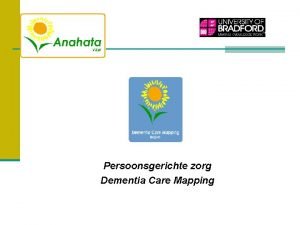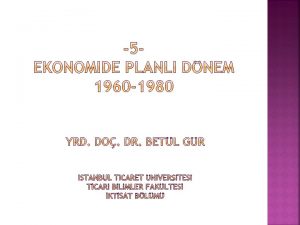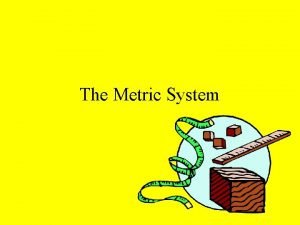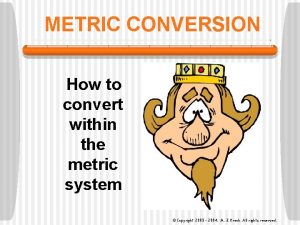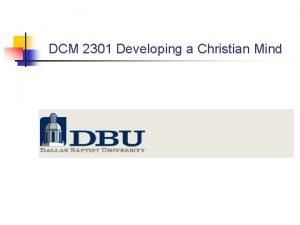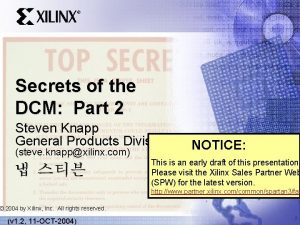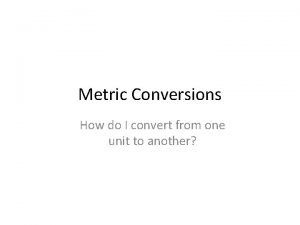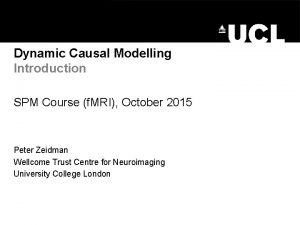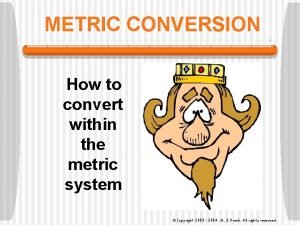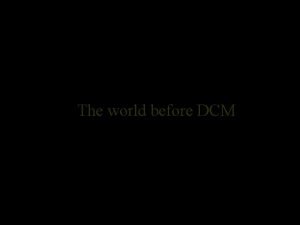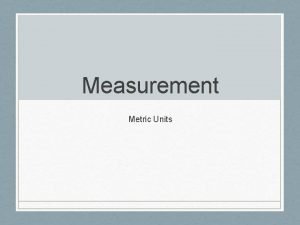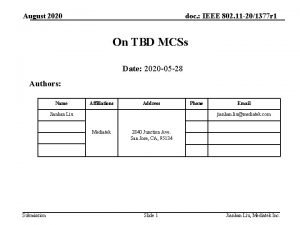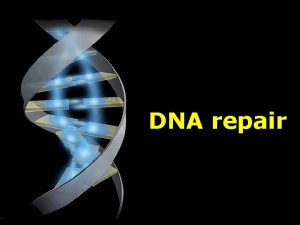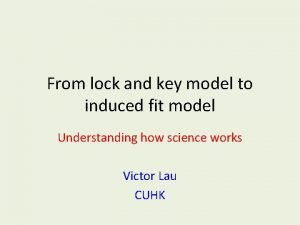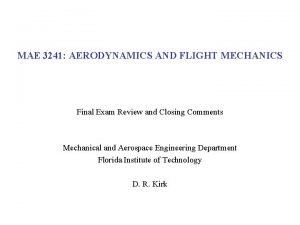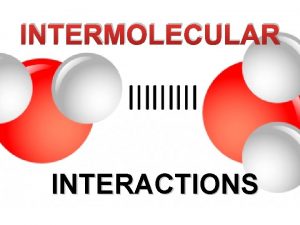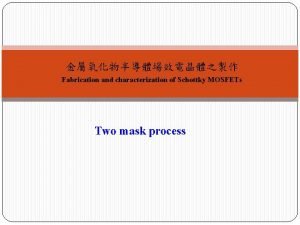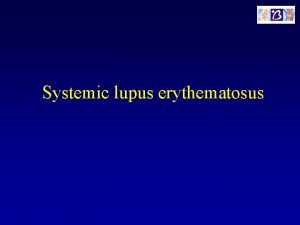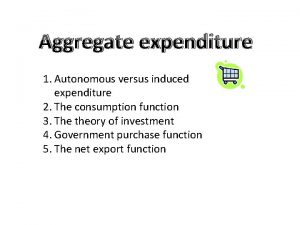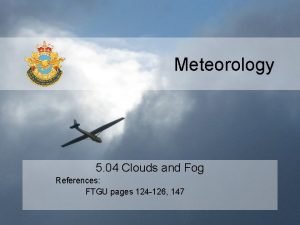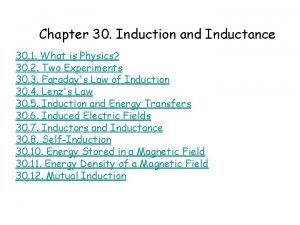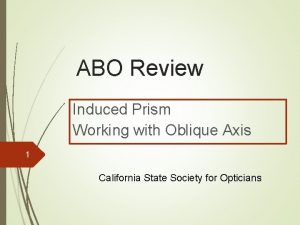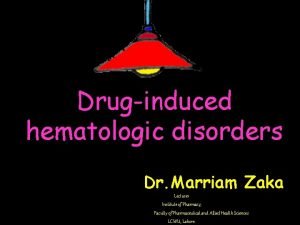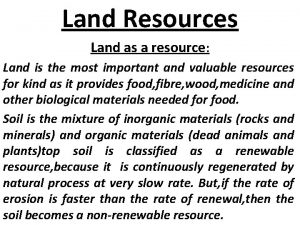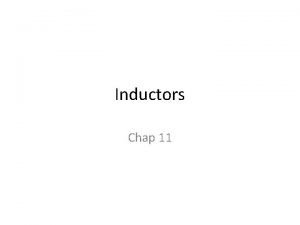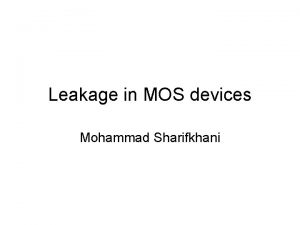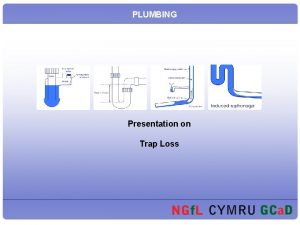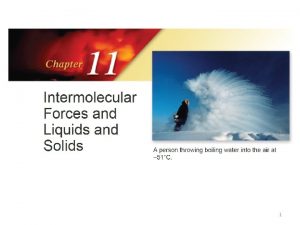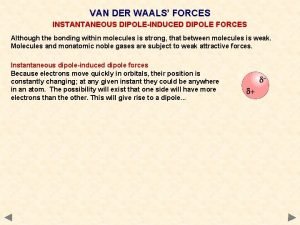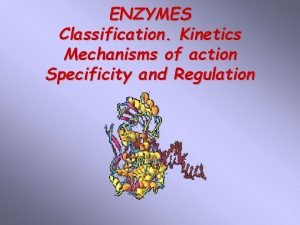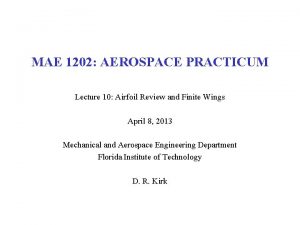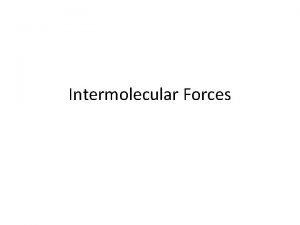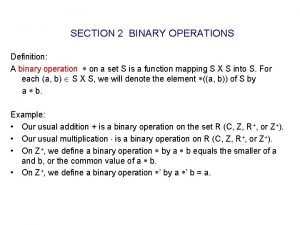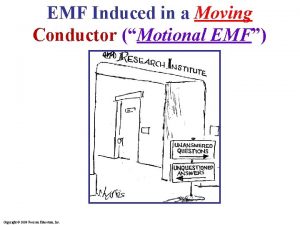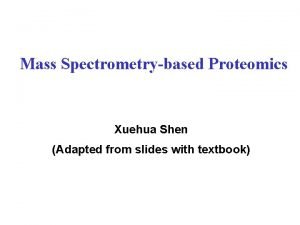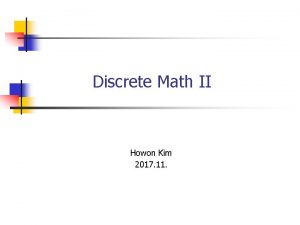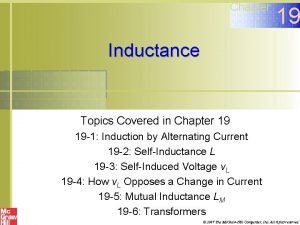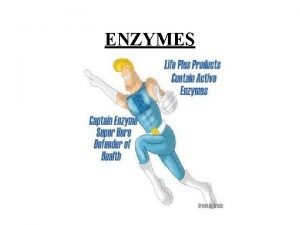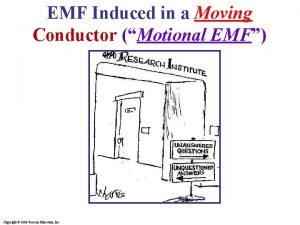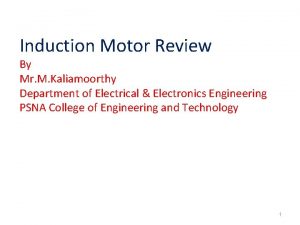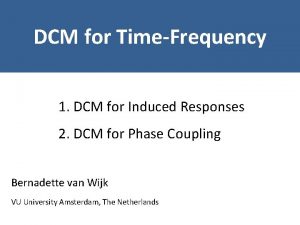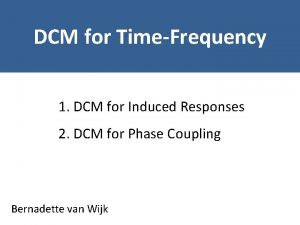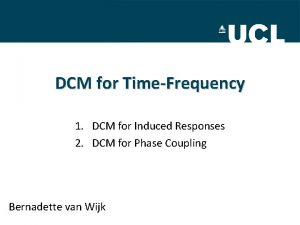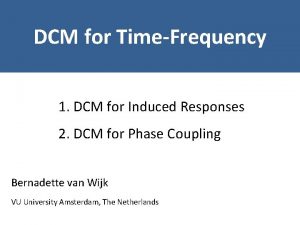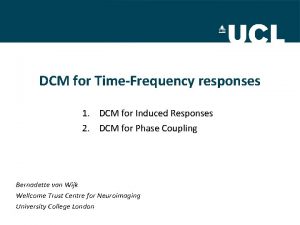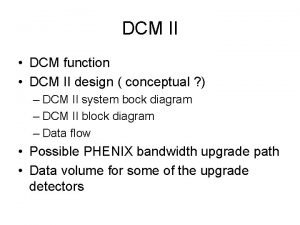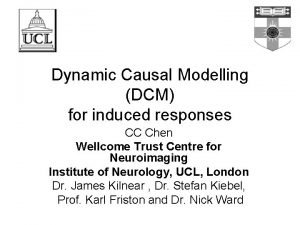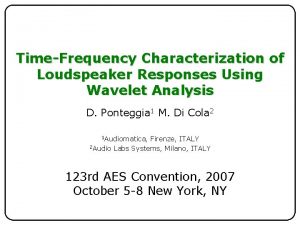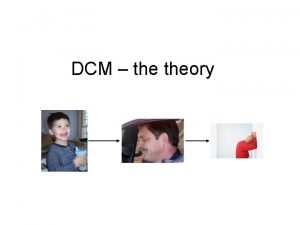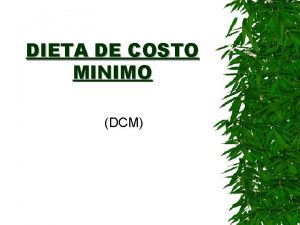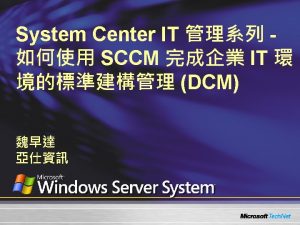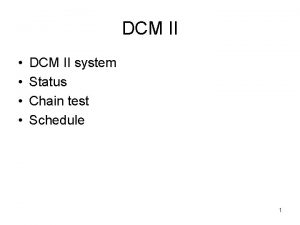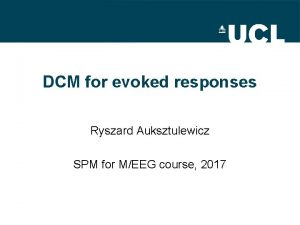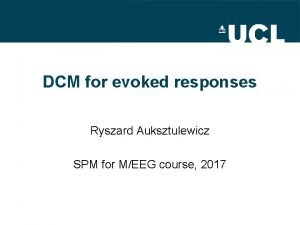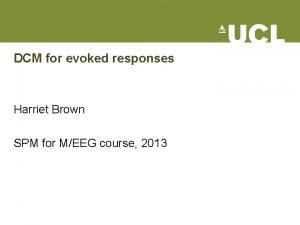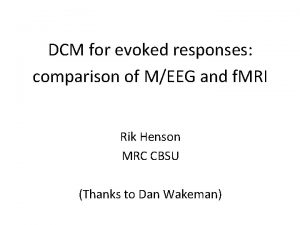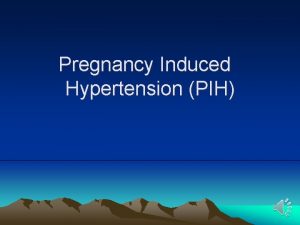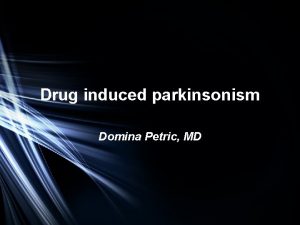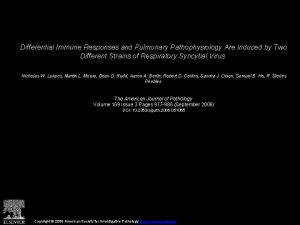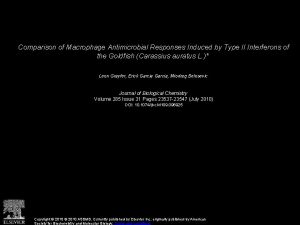DCM for TimeFrequency 1 DCM for Induced Responses


















































- Slides: 50

DCM for Time-Frequency 1. DCM for Induced Responses 2. DCM for Phase Coupling Will Penny DCM Course, Paris, 2012

Dynamic Causal Models Neurophysiological Phenomenological Phase spiny stellate cells Pyramidal Cells Electromagnetic forward model included • DCM for ERP • DCM for SSR Frequency inhibitory interneurons Time Source locations not optimized • DCM for Induced Responses • DCM for Phase Coupling

1. DCM for Induced Responses Region 2 Frequency ? ? Time Frequency Region 1 Time Changes in power caused by external input and/or coupling with other regions Model comparisons: Which regions are connected? E. g. Forward/backward connections (Cross-)frequency coupling: Does slow activity in one region affect fast activity in another ?

Connection to Neural Mass Models First and Second order Volterra kernels From Neural Mass model. Strong (saturating) input leads to cross-frequency coupling

cf. Neural state equations in DCM for f. MRI Single region u 1 c a 11 z 1 u 2 z 1 z 2

cf. DCM for f. MRI Multiple regions u 1 c a 11 z 1 u 2 a 21 z 2 a 22 u 1 z 2

cf. DCM for f. MRI Modulatory inputs u 1 u 2 c u 1 a 11 z 1 b 21 a 21 z 2 a 22 u 2 z 1 z 2

cf. DCM for f. MRI Reciprocal connections u 1 u 2 c u 1 a 11 z 1 b 21 a 12 a 21 z 2 a 22 u 2 z 1 z 2

Frequency DCM for induced responses dg(t)/dt=A∙g(t)+C∙u(t) Time Where g(t) is a K x 1 vector of spectral responses A is a K x K matrix of frequency coupling parameters Also allow A to be changed by experimental condition

Frequency Use of Frequency Modes G=USV’ Time Where G is a K x T spectrogram U is K x K’ matrix with K frequency modes V is K x T and contains spectral mode responses over time Hence A is only K’ x K’, not K x K

Connection to Neurobiology From Neural Mass model. Strong (saturating) input leads to cross-frequency coupling

Connection to Neurobiology Strong (saturating) input leads to cross-frequency coupling

Connection to Neurobiology Weak input does not

Differential equation model for spectral energy Intrinsic (within-source) coupling Extrinsic (between-source) coupling Linear (within-frequency) coupling How frequency K in region j affects frequency 1 in region i Nonlinear (between-frequency) coupling

Modulatory connections Intrinsic (within-source) coupling Extrinsic (between-source) coupling

Example: MEG Data

The “core” system FFA OFA input

Face selective effects modulate within hemisphere forward and backward cxs linear nonlinear Backward Forward linear nonlinear F L BL F NB L F L NB F NB N F L BL F NB L nonlinear (and linear) linear F L BN F NB N FFA FFA OFA OFA Input


Model Inference Winning model: FNBN Both forward and backward connections are nonlinear FLBL FNBL FLBN *FNBN 0 1000 0 -10000 -20000 -16308 -16306 -11895 -2000 -30000 -40000 -5000 -6000 -50000 -7000 -60000 -70000 backward linear backward nonlinear -59890 -8000 forward linear forward nonlinear

Parameter Inference: gamma affects alpha Right backward - inhibitory suppressive effect of gamma-alpha coupling in backward connections SPM t df 72; FWHM 7. 8 x 6. 5 Hz 12 20 44 28 36 28 20 Frequency (Hz) 12 4 36 4 To 10 Hz Left forward - excitatory - activating effect of gamma-alpha coupling in the forward connections 44 From 30 Hz From 32 Hz (gamma) to 10 Hz (alpha) t = 4. 72; p = 0. 002


2. DCM for Phase Coupling For studying synchronization among brain regions Relate change of phase in one region to phase in others Region 2 Region 1 ? ? Phase Interaction Function Region 3

Region 2 Region 1 ? ? Synchronization achieved by phase coupling between regions Model comparisons: Which regions are connected? E. g. ‘master-slave’/mutual connections Parameter inference: (frequency-dependent) coupling values

Synchronization Gamma sync synaptic plasticity, forming ensembles Theta sync system-wide distributed control (phase coding) Pathological (epilepsy, Parkinsons) Phase Locking Indices, Phase Lag etc are useful characterising systems in their steady state Sync – Steve Strogatz

One Oscillator

Two Oscillators

Two Coupled Oscillators 0. 3 Here we assume the Phase Interaction Function (PIF) is a sinewave

Different initial phases 0. 3

Stronger coupling 0. 6

Bidirectional coupling 0. 3

DCM for Phase Coupling Allow connections to depend on experimental condition Phase interaction function is an arbitrary order Fourier series

Example: MEG data Fuentemilla et al, Current Biology, 2010

Delay activity (4 -8 Hz) Visual Cortex (VIS) Medial Temporal Lobe (MTL) Inferior Frontal Gyrus (IFG)


Questions • Duzel et al. find different patterns of theta-coupling in the delay period dependent on task. • Pick 3 regions based on [previous source reconstruction] 1. Right MTL [27, -18, -27] mm 2. Right VIS [10, -100, 0] mm 3. Right IFG [39, 28, -12] mm • Find out if structure of network dynamics is Master-Slave (MS) or (Partial/Total) Mutual Entrainment (ME) • Which connections are modulated by memory task ?

MTL Master. Slave 1 IFG VIS Master VIS 3 IFG Partial Mutual Entrainment VIS 5 IFG MTL 2 IFG Master IFG VIS 4 IFG MTL Total Mutual Entrainment MTL VIS MTL 6 IFG VIS MTL 7 IFG VIS

Analysis • Source reconstruct activity in areas of interest (with fewer sources than sensors and known location, then pinv will do; Baillet 01) • Bandpass data into frequency range of interest • Hilbert transform data to obtain instantaneous phase. Data that we model are unwrapped phase time series in multiple regions. • Use multiple trials per experimental condition • Model inversion

3 IFG VIS MTL Log. Ev Model

Connection Strengths 0. 77 IFG 2. 46 VIS 2. 89 MTL 0. 89


Recordings from rats doing spatial memory task: Jones and Wilson, PLo. S B, 2005


f. IFG-f. VIS Control f. MTL-f. VIS

f. IFG-f. VIS Memory f. MTL-f. VIS

Connection to Neurobiology: Septo-Hippocampal theta rhythm Denham et al. 2000: Wilson-Cowan style model Hippocampus Septum


Four-dimensional state space

Hopf Bifurcation Hippocampus A B Septum A B

For a generic Hopf bifurcation (Erm & Kopell…) See Brown et al. 04, for PRCs corresponding to other bifurcations
 Induced dipole induced dipole attraction
Induced dipole induced dipole attraction Dementie
Dementie Megger 305e
Megger 305e 1970 dçm
1970 dçm Conversion table for measurements
Conversion table for measurements How to use the ladder method for metric conversion
How to use the ladder method for metric conversion Metric line
Metric line Dcm-2301
Dcm-2301 Dcm
Dcm K h d m d c m
K h d m d c m Dcm spm
Dcm spm Khdodcm
Khdodcm Dcm 300 modem
Dcm 300 modem Dcm
Dcm King henry doesn't usually drink chocolate milk
King henry doesn't usually drink chocolate milk The iso/iec 27001 standard — dcm services
The iso/iec 27001 standard — dcm services 11ax dcm
11ax dcm Induced mutation
Induced mutation Induced fit vs lock and key
Induced fit vs lock and key Induced drag formula
Induced drag formula Square well potential
Square well potential Schottky barrier lowering
Schottky barrier lowering Drug induced sle
Drug induced sle Induced vs autonomous expenditure
Induced vs autonomous expenditure Earthquake-induced shallow landslides in the philippines
Earthquake-induced shallow landslides in the philippines Fog types aviation
Fog types aviation Induced current
Induced current Induced prism
Induced prism Agranulocytosis
Agranulocytosis Man induced landslides
Man induced landslides Apa itu enzim
Apa itu enzim How to calculate magnetic force
How to calculate magnetic force Gidl
Gidl Self siphonage
Self siphonage Aerochamber definition
Aerochamber definition Hypophysation and breeding of indian major carps
Hypophysation and breeding of indian major carps Dipole induced dipole forces examples
Dipole induced dipole forces examples Der
Der Induced fit hypothesis
Induced fit hypothesis Induced drag formula
Induced drag formula Attractive forces chemistry
Attractive forces chemistry Induced fit
Induced fit Binary operations definition
Binary operations definition Emf induced in a moving conductor
Emf induced in a moving conductor Co-terminus
Co-terminus Induced subgraph
Induced subgraph Induced voltage formula
Induced voltage formula Alcohol-induced pain in hodgkin lymphoma
Alcohol-induced pain in hodgkin lymphoma Function of amylase
Function of amylase Emf induced in a moving conductor
Emf induced in a moving conductor Starting torque of induction motor
Starting torque of induction motor

